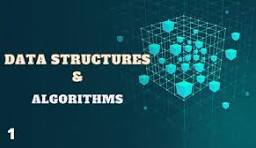
The Data Structures and Algorithms (DSA) are foundational concepts in computer science that concern efficient organization, storage, and retrieval of data, along with step-by-step procedures (algorithms) to solve problems using that data. Data structures provide ways to organize data, while algorithms define how to manipulate that data.
Key Features of Course Divine:
Career Opportunities After Data Structures And Algorithms:
Essential Skills you will Develop Data Structures And Algorithms:
Tools Covered:
Syllabus:
Module 1: Introduction to Algorithms and Programming Basics What are Algorithms and Data Structures? Algorithm analysis: Time & Space Complexity (Big O Notation)
Asymptotic Notations Types of Algorithms: Brute Force, Greedy, Divide & Conquer, etc. Programming language used: (C/C++/Java/Python – choose based on learner.
Module 2: Arrays and Strings 1D & 2D Arrays: Declaration, Traversal, Search, Update String Manipulation Techniques Two Pointer Technique Sliding Window Approach Common Problems: Reverse array, Rotate array, Palindrome check, Substrings.
Module 3: Linked Lists Types: Singly, Doubly, Circular Operations: Insert, Delete, Traverse, Reverse Detect Loop (Floyd’s Cycle), Merge Two Lists Applications in memory management.
Module 4: Stacks and Queues Stack: Push, Pop, Peek, Applications (Expression Evaluation, Parentheses Checker) Queue: Enqueue, Dequeue, Circular Queue Deque, Priority Queue Implementations using Arrays and Linked Lists.
Module 5: Recursion and Backtracking Introduction to Recursion Base Stack Frame Concept Backtracking Algorithms: N-Queens, Rat in a Maze, Sudoku Solver and Dynamic Programming basics.
Module 6: Trees Binary Tree, Binary Search Tree BST Tree Traversals: In order, Preorder, Post order, Level Order Height, Diameter, LCA Lowest Common Ancestor
Balanced Trees: AVL Trees, Red-Black Trees Intro only.
Module 7: Heaps and Hashing Heap Data Structure: Min Heap, Max Heap Heap Operations and Heap Sort Hash Tables: Hashing Techniques, Collision Handling , Frequency Counting Problems.
Module 8: Graphs Graph Representations: Adjacency List & Matrix DFS, BFS Traversal Shortest Path: Dijkstra, Bellman-Ford Topological Sort, Minimum Spanning Tree: Prim’s & Kruskal’s.
Module 9: Greedy and Dynamic Programming Greedy Strategy Examples: Activity Selection, Fractional Knapsack 0/1 Knapsack, Longest Common Subsequence (LCS) Tabulation Coin Change, Matrix Chain Multiplication.
Module 10: Real-world Applications & Interview Prep Common Coding Interview Problems Practice Platforms: LeetCode, HackerRank, Codeforces Resume Tips for DSA Projects Capstone Project: Build a DSA Visualizer / Solve 50 DSA Questions Mock Test and Certification.
Industry Projects:
Who is this program for?
How To Apply:
Mobile: 9100348679
Email: coursedivine@gmail.com

You cannot copy content of this page